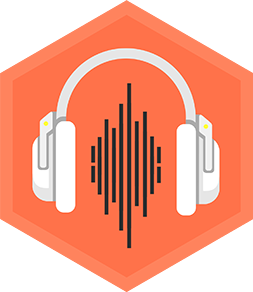Beatbox the High Hats
Learn to produce and practice beatboxing hi hat sounds using simple mouth techniques, rhythm patterns, and a metronome to build steady timing.



Step-by-step guide to Beatbox the High Hats
Step 1
Sit up straight in front of a mirror.
Step 2
Take three deep breaths to relax your mouth.
Step 3
Make a short "tss" sound by placing your tongue behind your top teeth and blowing air sharply.
Step 4
Make a longer "tsss" sound by stretching the "s" sound for about one second.
Step 5
Look in the mirror and check that your lips are slightly open and your teeth are close while you make the sounds.
Step 6
Turn on the metronome and set it to a slow tempo like 60 BPM.
Step 7
Make one short "tss" on each metronome click for one minute to practice steady timing.
Step 8
Make two "tss" sounds for every metronome click so you play eighth notes (one on the click and one between clicks) for one minute.
Step 9
Practice adding a slightly louder "tss" every four counts to create a simple accent while keeping steady time.
Step 10
Create a 15 to 30 second loop that mixes closed "tss" and open "tsss" sounds at your chosen tempo.
Step 11
Share your finished creation on DIY.org.
Final steps
You're almost there! Complete all the steps, bring your creation to life, post it, and conquer the challenge!


Help!?
I don't have a metronome or a mirror—what can I use instead?
Use your phone's front camera as a mirror and a free metronome app or a steady clock/tap your foot at 60 BPM to replace the metronome for the "one short \"tss\" on each metronome click" step.
My 'tss' sounds airy or inconsistent—how can I fix it?
Check in the mirror that your lips are slightly open and your teeth are close as instructed, place your tongue behind your top teeth, blow a sharper burst of air, and practice the short versus longer "tsss" slowly before using the metronome.
How can I adapt this activity for younger or older kids?
For younger kids, lower the tempo to 40–50 BPM, shorten practice intervals to 20–30 seconds, and guide them through the "take three deep breaths" and mirror checks, while older kids can increase tempo, extend loops to 30 seconds, and add more complex accents or faster eighth-note patterns.
How can we make the loop more creative before sharing on DIY.org?
Layer multiple recordings of your 15–30 second loop with different mixes of closed "tss", open "tsss", louder four-count accents, and optional hand claps or snaps to personalize and improve the creation before uploading to DIY.org.
Watch videos on how to Beatbox the High Hats
Hi-Hat - How to Beatbox (EASY TUTORIAL) by a beatbox teacher
Facts about beatboxing and vocal percussion for kids
⏱️ Practicing with a metronome (try 60–120 BPM) helps your hi-hat stay steady so your rhythms sound tight and confident.
🌟 Beatboxers can layer sounds live with loopers to build whole songs — some performers stack dozens of mouth sounds to become a one-person band!
🥁 Beatboxers copy the hi-hat by making a sharp "ts" or "tss" sound with their tongue and teeth — it's the tiny tick that keeps the beat!
🎧 Hi-hat patterns like eighth notes (1 & 2 &) or sixteenth notes (1 e & a) are used in many songs to make grooves feel faster or busier.
👄 Your mouth is a mini drum kit: lips, tongue, teeth and voice can make snares, kicks, and cymbals — no instruments needed.
How do you beatbox hi-hat sounds and teach a child to do them?
What materials do I need to practice beatbox hi-hats with my child?
What ages is learning beatbox hi-hats suitable for?
What are the benefits of practicing beatbox hi-hat sounds with kids?


One subscription, many ways to play and learn.
Only $6.99 after trial. No credit card required



